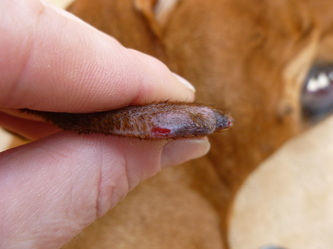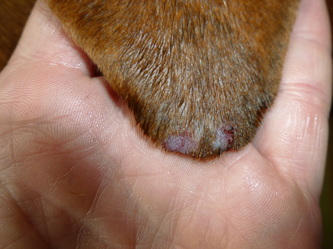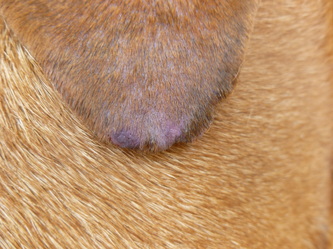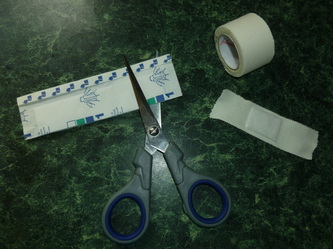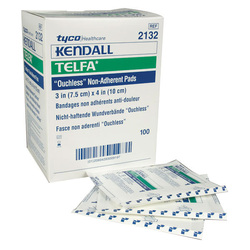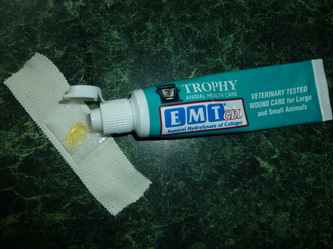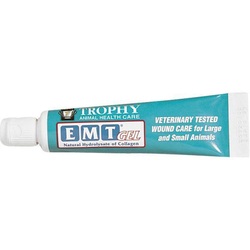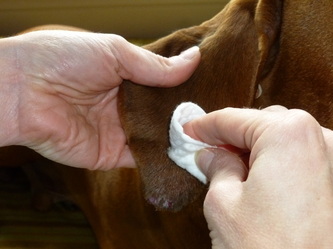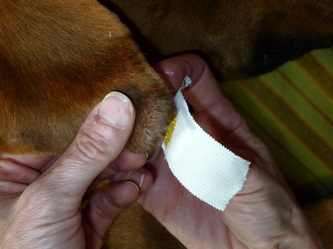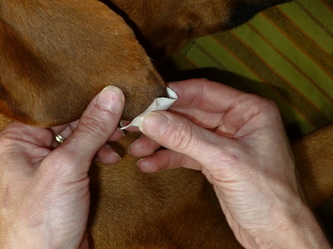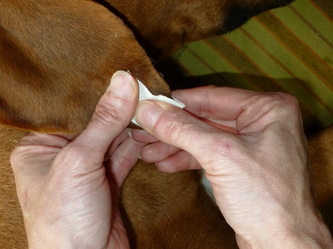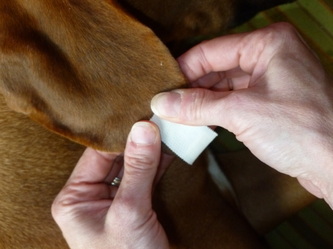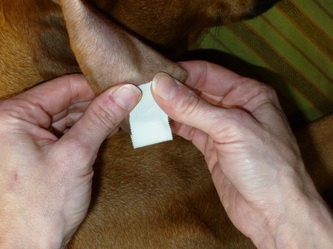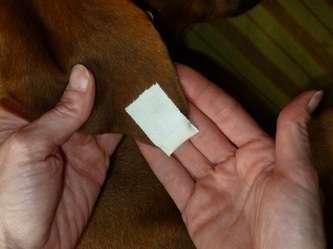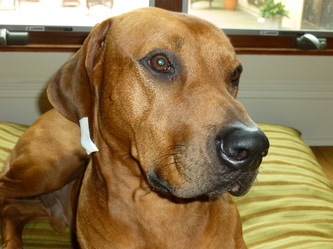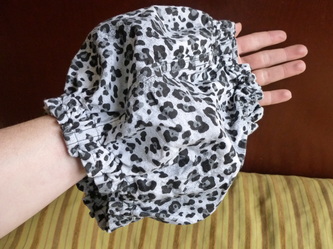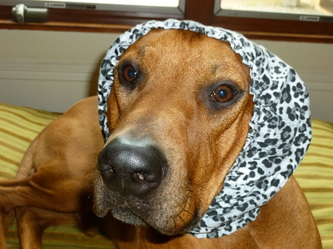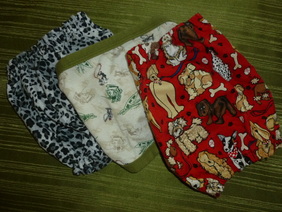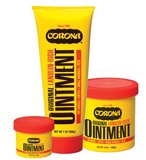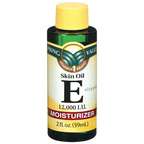- About Us
- Luvakis Rhodesian Ridgebacks
- Current Litter
- Planned Breedings
-
About Our Puppies
-
Information and Articles
- Breed History
- AKC Information
- AKC Breed Standard
- Important Links
- Dog Stuff We Can't Live Without!
- Recommended Readings
- Finding the Right Breeder
- One Puppy or Two?
- Dogs and Kids (Reading Canine Body Language)
- Tutorials: Ear Taping, Ear Wounds, Nail Dremeling >
- Collar Entrapment, Strangulation and CPCR Techniques Article
- What Does Bloat (GDV) Look Like?
- Contact Us
Dealing With That Pesky Ear Tip Injury
(You're Not Really A Ridgeback Until You've Had One)
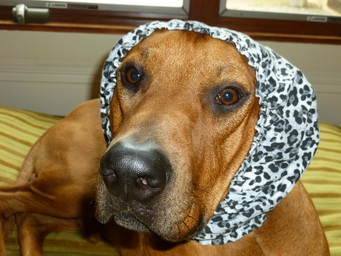
We've all known a dog who has busted their ear tip open. Either playing with another dog, violently/repetitively shaking their head due to an ear infection, striking their ear tip on a hard object while shaking their head or the like. The ear tip is a vulnerable piece of skin that can be damaged easily and once damaged, bleeds readily (and sometimes profusely) and is slow to heal.
Of course, your veterinarian should be consulted to see if there surgical or other medical intervention is needed to repair the wound. Treatment varies depending on if the skin has been torn, cut, punctured or if the tip has just generally eroded (sometimes called an ulcer). Erosion is a breakdown of the outer layers of the skin, usually as the result of a cut, abrasion, or inflammation. Ear tip ulcers tend to be the hardest type of ear wound to heal because there are no opposing edges to heal together, instead, the wound must granulate closed and form scar tissue. Granulation tissue is a mass of new connective tissue (collagen fibroblasts and fatty cells) and capillaries formed on the surface of a healing ulcer, usually leaving a scar.
If the cause of an ear tip wound is not known, it is equally important to have your veterinarian assess the ear for infection, as this often causes dogs to violently shake their head and scratch at their ears. If the wound is a secondary problem, it will not be able to fully heal until the underlying cause (ear infection) is resolved.
The following treatment is how we treat ear tip ulcers. Healing times, of course, vary depending on the severity and cause of the original wound. We typically apply each protective bandage for as long as the dog will leave it on, then replace as soon as the tape appears to be loosening/peeling away from the skin. Total treatment time is often 3-to-6-weeks, then several more months of daily vitamin E oil and lanolin to help support the new, healthy tissue.
Of course, your veterinarian should be consulted to see if there surgical or other medical intervention is needed to repair the wound. Treatment varies depending on if the skin has been torn, cut, punctured or if the tip has just generally eroded (sometimes called an ulcer). Erosion is a breakdown of the outer layers of the skin, usually as the result of a cut, abrasion, or inflammation. Ear tip ulcers tend to be the hardest type of ear wound to heal because there are no opposing edges to heal together, instead, the wound must granulate closed and form scar tissue. Granulation tissue is a mass of new connective tissue (collagen fibroblasts and fatty cells) and capillaries formed on the surface of a healing ulcer, usually leaving a scar.
If the cause of an ear tip wound is not known, it is equally important to have your veterinarian assess the ear for infection, as this often causes dogs to violently shake their head and scratch at their ears. If the wound is a secondary problem, it will not be able to fully heal until the underlying cause (ear infection) is resolved.
The following treatment is how we treat ear tip ulcers. Healing times, of course, vary depending on the severity and cause of the original wound. We typically apply each protective bandage for as long as the dog will leave it on, then replace as soon as the tape appears to be loosening/peeling away from the skin. Total treatment time is often 3-to-6-weeks, then several more months of daily vitamin E oil and lanolin to help support the new, healthy tissue.
|
(Click on any of the photos below to scroll through; captions are at the bottom of the enlarged photos.)
|
You will need:
We continue to apply a lanolin product to the site for several months after the initial wound has established scar tissue. This is particularly important in winter months when the air is drier and tissues can dry out, chapping and re-opening scar tissue or a nearly healed wound and rendering you back to square one. Apply a small pea-sized amount of lanolin ointment directly to the site and work it into the tissues with your fingertips for a good minute or two, as the tactile stimulation also aids tissue health and healing.
(Corona Ointment is our product of choice, but any lanolin-based ointment works well, too - these can be easily found in the baby section of your favorite store, sold as nipple cream/ointment for nursing mothers.) REMEMBER: Lanolin is temperature-sensitive. It is a stable product, but becomes very viscous at less than normal room temperature. Keep this in mind when selecting a storage location; this stuff can be hard to work with when cold! The use of Vitamin E Oil and Corona ointment can help tissues continue to heal after the initial wound has granulated in and scar tissue is well-formed.
We use a dab of vitamin E oil (applied with a cotton tip swap) to the area, followed by a small pea-sized amount of Corona Ointment (or other lanolin ointment) 5 minutes later. Work the Corona Ointment into the tissues with your fingertips for a good minute or two, as the tactile stimulation also aids tissue health and healing. |

